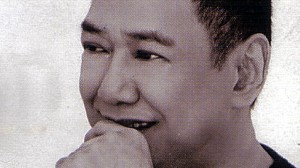Basil Valdez breathes new life into bromidic ballads
You only have to listen to Basil Valdez’s rendition of Noel Cabangon’s “Kanlungan” and Willie Revillame’s “Ikaw Na Nga” to be reminded of his prodigious gifts as a performer. His comeback album, “Basil S. Valdez,” is one of the best compilations of OPM covers in years, and reinforces the notion that the singing icon is still the preeminent balladeer of his—and this—generation!
What sets him apart from today’s popular recording artists? Basil doesn’t rely on the fabricated flourishes of Autotune-tweaked melodies, or an amplified sound (like the excessive use of reverb to create an overlay of schmaltz) that distracts from a singer’s weaknesses and lack of vocal heft.
Abundance
We mention this because, in a country that prides itself with an endless abundance of outstanding performers, it is ironic to note the confounding number of non-singers these days who shamelessly “belch” and “bleat” their way to “digitally-enhanced” gold-record triumphs!
Valdez can teach these singer-wannabes a thing or three about “real” singing and interpretation. In Basil’s able hands (and voice), Romeo Dongeto and Vehnee Saturno’s bromidic compositions aren’t just about love lost and found: He sings “Kanlungan” as a bittersweet ode to innocence (“Ang mga puno’t halaman ay kabiyak ng aking gunita/ Sa paglipas ng panahon, bakit kailangan ding lumisan?”), while the seasoned interpreter lends sophistication to the latter tune’s more “populist” sensibility and treats it as the exultation of an emerging romance.
Article continues after this advertisementIn his cover of “Kung Ako Na Lang Sana,” Basil turns pleading into wistful yearning, and he adds urgency to the taut dramatic flourishes of Arnold Buena’s arrangement for ZsaZsa Padilla’s “Sana’y Maghintay Ang Walang Hanggan.”
Article continues after this advertisementTrue, how can an album fail with a repertoire written by the likes of Ryan Cayabyab, George Canseco, Louie Ocampo, Jose Mari Chan, Saturno, and Willy Cruz, each song arranged by innovative musicians like Buena, Bond Samson, Homer Flores, Nino Regalado, Joey Benin, Ric Mercado and Beth Martin? But, more than its exceptional musicians, the collection’s best asset—and cohesive force—remains Basil himself.
A great interpreter has the ability to breathe new life into memorable melodies whose charms have otherwise been compromised by overuse. This is precisely what Basil accomplishes in George Canseco and Louie Ocampo’s “Ikaw” and Ryan Cayabyab’s “Paano Na Kaya?,” sans Bugoy Drilon’s zealous but overreaching curlicues.
Vocal tricks
Moreover, he doesn’t resort to any gimmicky vocal tricks to catch listeners’ fancy, because his remakes are far from merely perfunctory (True Faith’s “Muntik Nang Maabot Ang Langit”)—they’re seamlessly sung and soulfully rendered, and they soar even more as he plumbs deeper into their “stories.”
Basil’s impeccable singing also dispenses lessons on clarity, thematic analysis and phrasing—and there are no throwaway lines, which is evident in Jomari Chan and Rolando Tinio’s sumptuous “Minsan Pa” (another must-hear), Roni and Gigi Cordero’s soaring “Hanggang,” and his sublime a cappella number with The Company, “Pagdating Ng Panahon.” Indeed, a talent like Basil is timeless—and ages like wine!
